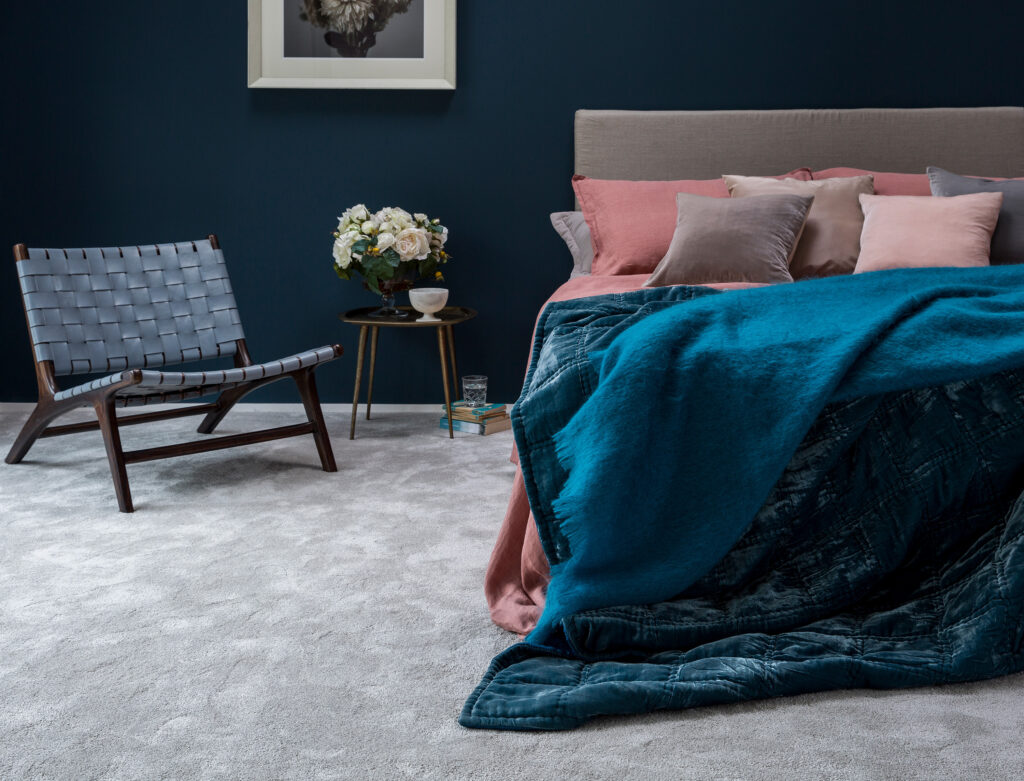A guide to underfloor heating: Choosing the right flooring
Underfloor heating (UFH) has grown in popularity as a modern, efficient way to heat homes, especially in these colder months, and tougher times.
Walking barefoot into your bathroom on these cold mornings need not be such a shocking wake up call when you have lovely heated floors. Beyond offering comfort and warmth, it also frees up wall space by eliminating the need for radiators (so you can add more fabulous artwork or most likely the much needed storage!) If you’re considering splashing out on UFH for your home, understanding which types of flooring work best with this system is key to ensuring maximum performance and longevity.

How Does Underfloor Heating Work?
Underfloor heating comes in two main types:
1. Electric Systems: Use cables or mats installed under the floor surface to generate heat. These are quicker to install but may be more expensive to run.
2. Water-Based Systems: Circulate warm water through pipes embedded in the subfloor. This system is more cost-effective over time but requires more extensive installation work.
The goal of any UFH system is to provide an even, radiant heat that gently warms the room from the floor up. However, its efficiency depends on the flooring material you choose.
When selecting flooring for UFH, consider:
Thermal Conductivity: Materials that transfer heat efficiently, ensure faster heating.
Dimensional Stability: The flooring must withstand changes in temperature without warping or cracking.
Installation Method: Some flooring types require specific adhesives or underlays compatible with UFH systems.
We would recommend speaking to flooring experts (like us) when you are choosing your flooring, to ensure you are selecting the right sort of flooring for your home
The best flooring options for underfloor heating


Luxury Vinyl Flooring (LVT)
Why They Work Well: LVT, like Karndean or Amtico, is thin yet durable, allowing heat to pass through efficiently. Its dimensional stability ensures it won’t warp under temperature changes. (Plus they are super stylish, and will bring a touch of luxury to your home)
Ideal Spaces: Living areas, kitchens, and bedrooms.
Pro Tip: Look for LVT products specifically labeled as UFH-compatible. We love Karndean, Amtico and Quickstep.
Take a look at quicksteps handy guide.

Engineered wood flooring
Why It Works Well: Unlike solid wood, engineered wood has a stable structure that resists warping, making it a better choice for UFH systems.
Ideal Spaces: Bedrooms and living rooms.
Pro Tip: Choose planks no thicker than 18mm to ensure efficient heat transfer.
Laminate Flooring
Why It Works Well: Modern laminates are often designed to work with UFH. They’re cost-effective and come in a variety of styles to mimic wood or stone.
Ideal Spaces: Living areas and bedrooms.
Pro Tip: Always use a UFH-approved underlay with laminate.



Carpet
Why It Works Well: While not the most efficient choice, low-tog carpets (combined with the right underlay) can be used with UFH. Carpeted flooring takes slightly longer to heat up initially but stays warm longer.
Ideal Spaces: Bedrooms and living rooms.
Pro Tip: Ensure the combined tog value (carpet and underlay) doesn’t exceed 2.5 for optimal heat transfer. Read more on this…
Take a look at the different types of underlay we use…
With all of the above options it is vital to ensure you have the correct underlay with your flooring and as mentioned previously that both underlay and flooring do not exceed 2.5 tog.
Flooring to avoid with underfloor heating
Solid Hardwood: Prone to expansion and contraction with temperature changes.
Thick Carpets: High tog ratings hinder heat transfer.
Rubber Flooring: May not handle prolonged exposure to heat well.
Benefits of choosing the right flooring for UFH
Enhanced Comfort: The right flooring will complement the warmth of your UFH system, ensuring your home feels cozy all year round.
Energy Efficiency: Proper flooring reduces heat loss, making your system more cost-effective to run.
Durability: UFH-compatible materials are designed to withstand temperature fluctuations, extending the lifespan of your floors.
Final Thoughts…
Underfloor heating is a worthwhile investment for any modern home, offering luxury and efficiency. By pairing it with the right flooring—be it tiles, LVT, or engineered wood—you can create a warm, stylish space perfect for every season. If you’re unsure which flooring is best for your UFH system, speak to our experts for personalised advice and recommendations.
Transform your home with the perfect combination of warmth and style today!
Give us a call on 01223 233233 or pop into our showroom – open Monday – Saturday 9am – 5pm.
You may also want to read Which type of flooring is the warmest

